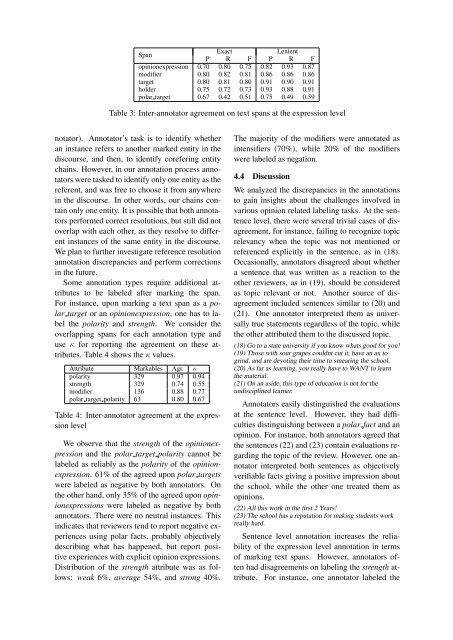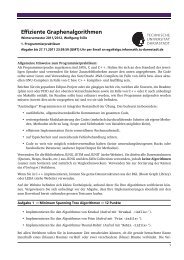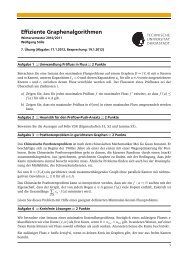Sentence and Expression Level Annotation of Opinions in User ...
Sentence and Expression Level Annotation of Opinions in User ...
Sentence and Expression Level Annotation of Opinions in User ...
Create successful ePaper yourself
Turn your PDF publications into a flip-book with our unique Google optimized e-Paper software.
Span<br />
Exact<br />
Lenient<br />
P R F P R F<br />
op<strong>in</strong>ionexpression 0.70 0.80 0.75 0.82 0.93 0.87<br />
modifier 0.80 0.82 0.81 0.86 0.86 0.86<br />
target 0.80 0.81 0.80 0.91 0.90 0.91<br />
holder 0.75 0.72 0.73 0.93 0.88 0.91<br />
polar target 0.67 0.42 0.51 0.75 0.49 0.59<br />
Table 3: Inter-annotator agreement on text spans at the expression level<br />
notator). Annotator’s task is to identify whether<br />
an <strong>in</strong>stance refers to another marked entity <strong>in</strong> the<br />
discourse, <strong>and</strong> then, to identify corefer<strong>in</strong>g entity<br />
cha<strong>in</strong>s. However, <strong>in</strong> our annotation process annotators<br />
were tasked to identify only one entity as the<br />
referent, <strong>and</strong> was free to choose it from anywhere<br />
<strong>in</strong> the discourse. In other words, our cha<strong>in</strong>s conta<strong>in</strong><br />
only one entity. It is possible that both annotators<br />
performed correct resolutions, but still did not<br />
overlap with each other, as they resolve to different<br />
<strong>in</strong>stances <strong>of</strong> the same entity <strong>in</strong> the discourse.<br />
We plan to further <strong>in</strong>vestigate reference resolution<br />
annotation discrepancies <strong>and</strong> perform corrections<br />
<strong>in</strong> the future.<br />
Some annotation types require additional attributes<br />
to be labeled after mark<strong>in</strong>g the span.<br />
For <strong>in</strong>stance, upon mark<strong>in</strong>g a text span as a polar<br />
target or an op<strong>in</strong>ionexpression, one has to label<br />
the polarity <strong>and</strong> strength. We consider the<br />
overlapp<strong>in</strong>g spans for each annotation type <strong>and</strong><br />
use κ for report<strong>in</strong>g the agreement on these attributes.<br />
Table 4 shows the κ values.<br />
Attribute Markables Agr. κ<br />
polarity 329 0.97 0.94<br />
strength 329 0.74 0.55<br />
modifier 136 0.88 0.77<br />
polar target polarity 63 0.80 0.67<br />
Table 4: Inter-annotator agreement at the expression<br />
level<br />
We observe that the strength <strong>of</strong> the op<strong>in</strong>ionexpression<br />
<strong>and</strong> the polar target polarity cannot be<br />
labeled as reliably as the polarity <strong>of</strong> the op<strong>in</strong>ionexpression.<br />
61% <strong>of</strong> the agreed upon polar targets<br />
were labeled as negative by both annotators. On<br />
the other h<strong>and</strong>, only 35% <strong>of</strong> the agreed upon op<strong>in</strong>ionexpressions<br />
were labeled as negative by both<br />
annotators. There were no neutral <strong>in</strong>stances. This<br />
<strong>in</strong>dicates that reviewers tend to report negative experiences<br />
us<strong>in</strong>g polar facts, probably objectively<br />
describ<strong>in</strong>g what has happened, but report positive<br />
experiences with explicit op<strong>in</strong>ion expressions.<br />
Distribution <strong>of</strong> the strength attribute was as follows:<br />
weak 6%, average 54%, <strong>and</strong> strong 40%.<br />
The majority <strong>of</strong> the modifiers were annotated as<br />
<strong>in</strong>tensifiers (70%), while 20% <strong>of</strong> the modifiers<br />
were labeled as negation.<br />
4.4 Discussion<br />
We analyzed the discrepancies <strong>in</strong> the annotations<br />
to ga<strong>in</strong> <strong>in</strong>sights about the challenges <strong>in</strong>volved <strong>in</strong><br />
various op<strong>in</strong>ion related label<strong>in</strong>g tasks. At the sentence<br />
level, there were several trivial cases <strong>of</strong> disagreement,<br />
for <strong>in</strong>stance, fail<strong>in</strong>g to recognize topic<br />
relevancy when the topic was not mentioned or<br />
referenced explicitly <strong>in</strong> the sentence, as <strong>in</strong> (18).<br />
Occasionally, annotators disagreed about whether<br />
a sentence that was written as a reaction to the<br />
other reviewers, as <strong>in</strong> (19), should be considered<br />
as topic relevant or not. Another source <strong>of</strong> disagreement<br />
<strong>in</strong>cluded sentences similar to (20) <strong>and</strong><br />
(21). One annotator <strong>in</strong>terpreted them as universally<br />
true statements regardless <strong>of</strong> the topic, while<br />
the other attributed them to the discussed topic.<br />
(18) Go to a state university if you know whats good for you!<br />
(19) Those with sour grapes couldnt cut it, have an ax to<br />
gr<strong>in</strong>d, <strong>and</strong> are devot<strong>in</strong>g their time to smear<strong>in</strong>g the school.<br />
(20) As far as learn<strong>in</strong>g, you really have to WANT to learn<br />
the material.<br />
(21) On an aside, this type <strong>of</strong> education is not for the<br />
undiscipl<strong>in</strong>ed learner.<br />
Annotators easily dist<strong>in</strong>guished the evaluations<br />
at the sentence level. However, they had difficulties<br />
dist<strong>in</strong>guish<strong>in</strong>g between a polar fact <strong>and</strong> an<br />
op<strong>in</strong>ion. For <strong>in</strong>stance, both annotators agreed that<br />
the sentences (22) <strong>and</strong> (23) conta<strong>in</strong> evaluations regard<strong>in</strong>g<br />
the topic <strong>of</strong> the review. However, one annotator<br />
<strong>in</strong>terpreted both sentences as objectively<br />
verifiable facts giv<strong>in</strong>g a positive impression about<br />
the school, while the other one treated them as<br />
op<strong>in</strong>ions.<br />
(22) All this work <strong>in</strong> the first 2 Years!<br />
(23) The school has a reputation for mak<strong>in</strong>g students work<br />
really hard.<br />
<strong>Sentence</strong> level annotation <strong>in</strong>creases the reliability<br />
<strong>of</strong> the expression level annotation <strong>in</strong> terms<br />
<strong>of</strong> mark<strong>in</strong>g text spans. However, annotators <strong>of</strong>ten<br />
had disagreements on label<strong>in</strong>g the strength attribute.<br />
For <strong>in</strong>stance, one annotator labeled the








